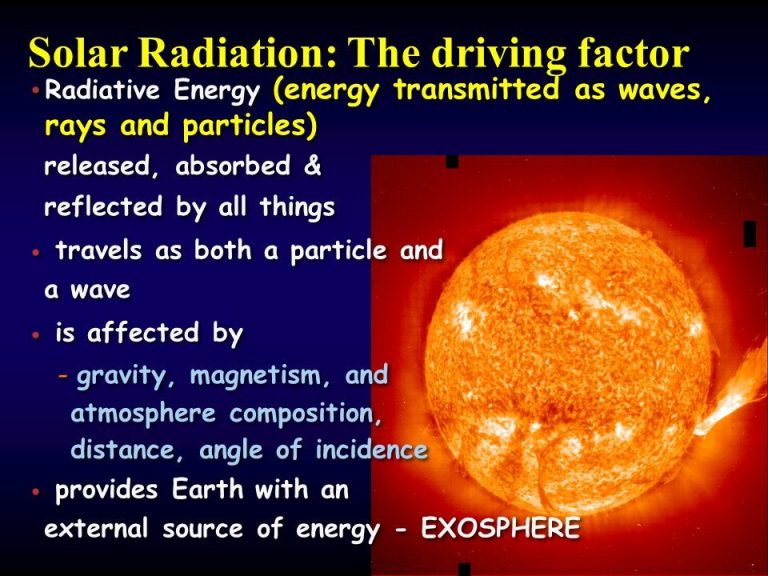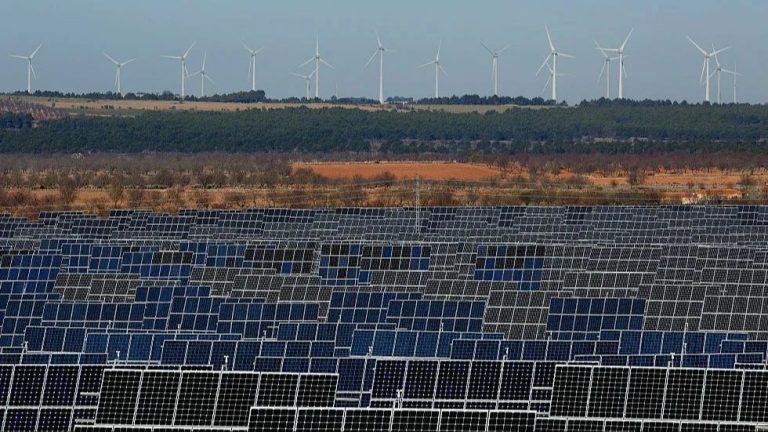What Does Non-Renewable Mean?
Definition of Non-Renewable Resources
Non-renewable resources are materials that cannot be readily replenished by natural means within a short timeframe. They occur in finite quantities that will eventually become depleted if extracted and consumed at a faster rate than they are naturally produced.
The key aspect of non-renewable resources is that their quantities are fixed or finite on human timescales. New reserves cannot be easily generated once the initial stocks have been exhausted. This makes them unsustainable for long-term usage at high rates without recycling. They are formed by natural processes that can take billions of years, so are not considered renewable on human timescales.
Some examples of non-renewable resources include fossil fuels like oil, natural gas and coal that come from ancient fossilized organic materials. Metals such as gold, silver and copper are also considered non-renewable since their amounts in the earth’s crust are fixed. Others include mineral resources like phosphorus that is used for fertilizer production.
Since non-renewable resources cannot be replaced as fast as they are consumed, relying heavily on them poses serious risks. Careful usage, conservation, recycling and transitioning to renewable alternatives whenever possible are crucial for ensuring their availability for future generations.
Types of Non-Renewable Resources
Fossil fuels like oil, coal, and natural gas are major types of non-renewable resources. Oil is a liquid fossil fuel that is refined into gasoline, diesel, and many other products. Coal is a solid fossil fuel that is mainly used for electricity generation. Natural gas is a gaseous fossil fuel that is used for heating, cooking, and electricity generation. All fossil fuels were formed millions of years ago from the remains of plants and animals.
Other significant non-renewable resources include nuclear energy obtained from uranium ore, and minerals like gold, copper, and iron ore. Much of modern civilization is built using non-renewable resources like metals, minerals, and fossil fuels. They require very long timescales to form naturally, so they are considered non-renewable on a human timescale.
Why They Are Non-Renewable
Non-renewable resources are materials that take an extremely long time to form naturally through geological processes and cannot be easily replenished with the speed at which they are consumed. They are finite resources that were developed over millions or even billions of years in the earth’s crust, atmosphere, and oceans. Unlike renewable resources like solar, wind, or hydropower that can regenerate within a human lifespan, non-renewables like oil, coal, natural gas, and uranium do not naturally reproduce themselves in a short period of time.
Once non-renewable reserves are extracted and depleted by human consumption, they cannot be readily replaced at scale within one human generation. New deposits may still form given enough geologic timescales, but for all intents and purposes, easily recoverable non-renewables are finite and non-replenishing within a human lifetime. This essentially makes their usable supplies fixed and limited based on the natural endowments of these resources on Earth.
Current Usage Rates
We are depleting many critical non-renewable resources at an alarming rate. Fossil fuels like oil, coal, and natural gas currently account for over 80% of the world’s energy supply. It’s estimated that the world has around 50 years of oil, 110 years of natural gas, and 200 years of coal left at current rates of consumption. However, as developing nations industrialize and global energy demand rises, these fossil fuel reserves may be depleted much sooner.
Other non-renewable resources are also being used up rapidly. High-grade uranium ore, used for nuclear energy, may only have around 100 years of viable reserves left. Rare earth metals that are essential for electronics, batteries, and renewable energy are being exhausted faster than new reserves are being discovered. With the explosion of technology and rising global population, the demand for these finite resources continues to accelerate.
Experts warn that unless we transition to renewable energy sources and dramatically improve recycling of key materials, shortages of critical non-renewable resources could have dire economic, political and environmental consequences in the 21st century.
Environmental Impacts
The use of non-renewable resources like oil, natural gas, and coal has significant environmental impacts. The most notable is increased pollution. When burned for energy, fossil fuels release greenhouse gases like carbon dioxide and methane into the atmosphere. This causes air pollution and contributes to climate change.
According to the EPA, the burning of fossil fuels accounts for over 75% of global greenhouse gas emissions. These emissions trap heat in the atmosphere, causing global temperatures to rise. This leads to melting glaciers, rising sea levels, more extreme weather events like hurricanes and droughts, and disruption of ecosystems.
Mining and drilling for fossil fuels also takes a toll on the environment. Oil spills can pollute oceans, rivers, and groundwater. Coal mining practices like mountaintop removal can lead to deforestation, erosion, and the contamination of waterways. Natural gas drilling using hydraulic fracturing or “fracking” has been linked to earthquakes and water pollution.
In summary, humanity’s dependence on non-renewable resources is a major contributor to environmental issues like pollution, biodiversity loss, and climate change. Reducing our reliance on fossil fuels is crucial to protect the planet for future generations.
Economic Impacts
The use of non-renewable resources such as oil, coal, and natural gas can have significant economic impacts at local, national, and global levels. As these resources become more scarce, prices tend to fluctuate, which can negatively impact industries, consumers, and national economies.
Countries that rely heavily on imported non-renewables like oil and gas are vulnerable to price shocks and supply disruptions caused by geopolitical events and conflicts. This dependence threatens their energy security and makes their economies less stable. For example, events like the 1970s oil crisis demonstrated how an over-reliance on imported oil led to higher energy prices that contributed to economic downturns in many countries.
Higher prices for non-renewable resources get passed on to consumers through increases in electricity bills, heating and fuel costs, and the prices of many consumer products. Industries that rely heavily on non-renewables also face rising production and transportation costs as resource prices increase.
At the same time, fluctuating prices make it difficult for companies and governments to plan investments and budgets. The volatility can deter spending and business growth and hinder economic stability.
With global demand projected to rise in the long-term, continued dependence on finite, geographically concentrated supplies of non-renewable resources is likely to exacerbate their price volatility. This uncertainty presents economic risks and underscores the need for policies that promote renewable energy sources and greater efficiency.
Social Impacts
The geopolitical conflicts that can arise over access to non-renewable resources are a major social consequence. As supplies dwindle, competition between nations over remaining reserves increases. This can lead to tensions, arms races, and even wars as countries try to secure access to critical resources like oil and natural gas.
Control of non-renewable resources is often tied to national security interests. For example, many conflicts in the Middle East have revolved around oil access. The desire to control oil reserves and transportation routes has influenced foreign policy decisions and military interventions in the region.
Domestically, the depletion of resources like coal has devastated certain communities and workforces built around extractive industries. The decline of mining and drilling has led to unemployment, poverty, and outmigration in some rural areas and small towns. Retraining and reinvesting in new industries is often necessary.
On a global scale, the depletion of non-renewable resources threatens to exacerbate economic and power disparities between wealthy, resource-poor nations and poorer, resource-rich ones. The environmental and health consequences also disproportionately affect less developed nations.
The social upheaval that could occur as critical non-renewables like oil and natural gas run low is substantial. It underscores the need for policies that conserve supplies, transition to renewable alternatives, and ensure more equitable distribution of resources.
Transition to Renewables
As non-renewable resources become scarcer and more expensive, there is an increasing push to transition to renewable energy sources like solar, wind, geothermal, and hydropower. The costs of renewable energy technologies have declined substantially in recent years, making them more economically competitive with fossil fuels. Key factors driving this transition include:
– Improving efficiency of solar panels and wind turbines, resulting in cheaper electricity generation.
– Government subsidies and tax incentives to promote adoption of renewables.
– Rapid growth in renewable energy infrastructure like solar farms and wind farms as investments increase.
– Concerns about energy security and independence, since renewables utilize domestic resources.
– Public demand for clean energy to mitigate climate change and air pollution.
Despite the momentum behind renewables, challenges remain in overcoming the intermittency of solar and wind power. However, continued technology improvements like battery storage and smart grids will help enable higher renewable energy penetration in the future.
Conservation Strategies
Even though non-renewable resources will eventually run out, there are strategies we can implement now to conserve their use and make them last longer. The main conservation strategies focus on improving efficiency and reducing waste:
- Improving energy efficiency in homes, buildings, transportation and industry to reduce non-renewable fuel consumption.
- Switching to more efficient appliances, lighting, heating/cooling systems to decrease electricity usage.
- Implementing smarter urban planning and public transportation to reduce fuel needs.
- Using more fuel efficient vehicles, carpooling and public transport to lower gasoline demand.
- Developing more efficient industrial processes and machinery to reduce non-renewable inputs.
- Recycling materials such as metals, plastic and paper to reduce the need for new non-renewable resources.
- Cutting down on waste and excessive consumption habits to preserve non-renewable supplies.
- Designing products to be durable, repairable and reusable rather than disposable.
Conservation helps us responsibly manage and sustain non-renewable resources while we transition to more renewable options. Simple behavior changes and smart policies can greatly reduce our non-renewable consumption.
The Future
As non-renewable resources continue to be depleted, experts project that demand and global usage rates will increase in the coming decades before eventually declining. Fossil fuels like oil and coal are projected to remain in high demand globally, even as developed countries move toward adopting more renewable energy sources.
However, improvements in technology are expected to help make extraction and consumption of non-renewables more efficient. Methods like fracking, offshore drilling, and tapping tar sands allow access to previously unattainable deposits of oil and gas. Clean coal technology can reduce emissions from coal burning plants. Meanwhile, renewable energy technology continues to advance rapidly, which will enable more affordable and widespread adoption.
Many analysts foresee non-renewables continuing to play a major role in the global energy mix throughout the 21st century. But over the long-term, tapping finite resources is unsustainable. With improved technology and increased commitment to conservation, it is hoped that renewable energy can ultimately displace non-renewables as primary global energy sources.






